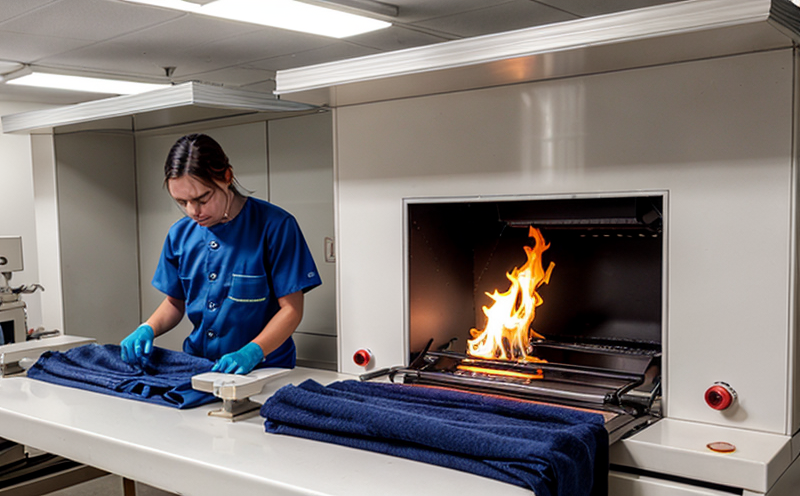Reaction-to-Fire Testing of Textile Footwear Components
The reaction-to-fire (RTF) testing of textile footwear components is a critical aspect of ensuring product safety and compliance with international standards. This type of testing evaluates how materials behave when exposed to fire, focusing on the extent of burning, flame spread, smoke production, and other factors that could impact user safety.
For textiles used in footwear, RTF tests are particularly important given the close contact these materials have with skin. The performance of these components can determine whether they contribute to an increased risk of fire hazards or enhance protection against them. Compliance with standards such as ISO 17492-3 for leather and textile upper footwear, or ASTM F1675 for rubber outsoles, ensures that products meet the necessary safety requirements.
The testing process typically involves exposing a representative sample of the material to controlled flame conditions in a precisely defined apparatus. The outcome is then evaluated based on specific criteria outlined in relevant standards. This assessment helps manufacturers identify any potential issues early in the development stage and implement corrective actions where necessary.
Understanding the importance of RTF testing extends beyond mere compliance; it also reflects an organization's commitment to quality assurance and consumer safety. By investing in this type of testing, companies can enhance their reputation by demonstrating a proactive approach towards product safety.
Why It Matters
The significance of RTF testing lies in its ability to provide insights into the behavior of materials under fire exposure. This information is crucial for manufacturers because it allows them to make informed decisions about material selection and design modifications that could improve safety.
- Ensures compliance with international safety standards
- Improves product durability by identifying weak points in the design
- Enhances user confidence through transparent quality assurance practices
- Promotes innovation by encouraging continuous improvement of materials and designs
In summary, RTF testing is not just about meeting regulatory requirements; it's an investment in the long-term success and safety of your products.
Benefits
The benefits of conducting RTF tests on textile footwear components are numerous. Firstly, it helps manufacturers ensure that their products meet stringent safety regulations. Secondly, it provides valuable data for improving product design and functionality. Additionally, successful completion of these tests can enhance brand reputation by demonstrating a commitment to safety.
Another significant advantage is the ability to compare different materials' performance objectively. This comparison aids in selecting the most suitable options based on specific needs while also reducing costs associated with trial-and-error approaches during development stages.
| Benefit | Description |
|---|---|
| Regulatory Compliance | Ensures adherence to international safety standards. |
| Design Improvement | Identifies areas requiring enhancement or modification. |
| Risk Reduction | Lowers the likelihood of accidents related to fire hazards. |
| Brand Reputation Enhancement | Demonstrates a strong commitment to product safety and quality assurance. |
Use Cases and Application Examples
- Testing upper materials for leather and textile combinations in boots and shoes
- Evaluating the flame resistance of rubber outsoles used in athletic footwear
- Assessing the performance of inner lining fabrics against fire hazards in safety boots
- Determining the suitability of thermal insulation materials for use in protective workwear footgear
In practice, RTF testing involves placing a sample cut from the material under test into a specially designed apparatus where it is subjected to controlled flame exposure. The duration and intensity of this exposure are carefully calibrated according to predefined protocols.
| Sample Preparation | Testing Procedure | Evaluation Criteria |
|---|---|---|
| Cut samples to standard dimensions and weight. | Expose the sample to controlled flame for a specified period. | Measure flaming time, non-flaming time, maximum flame height, smoke production index, etc. |





